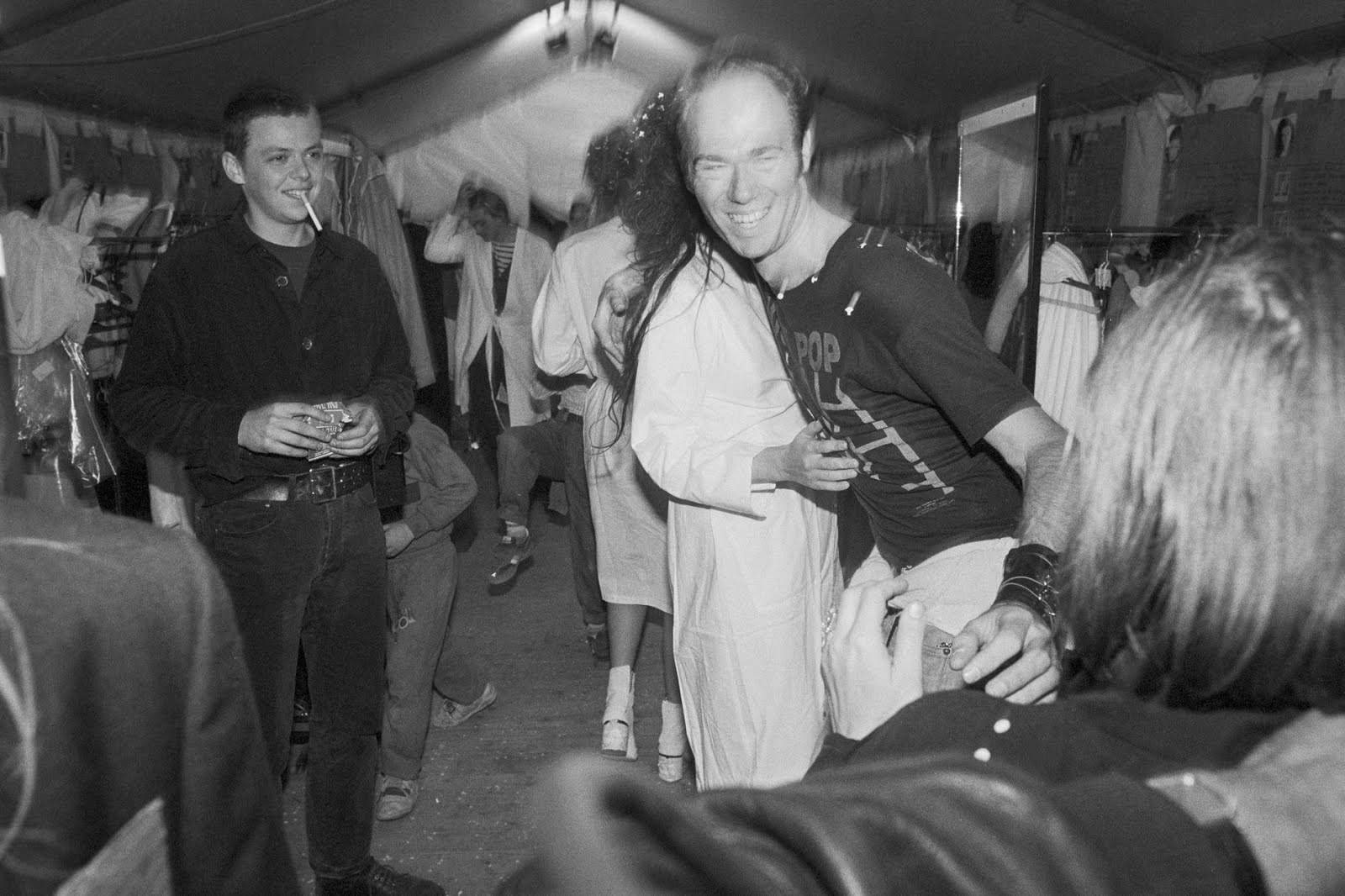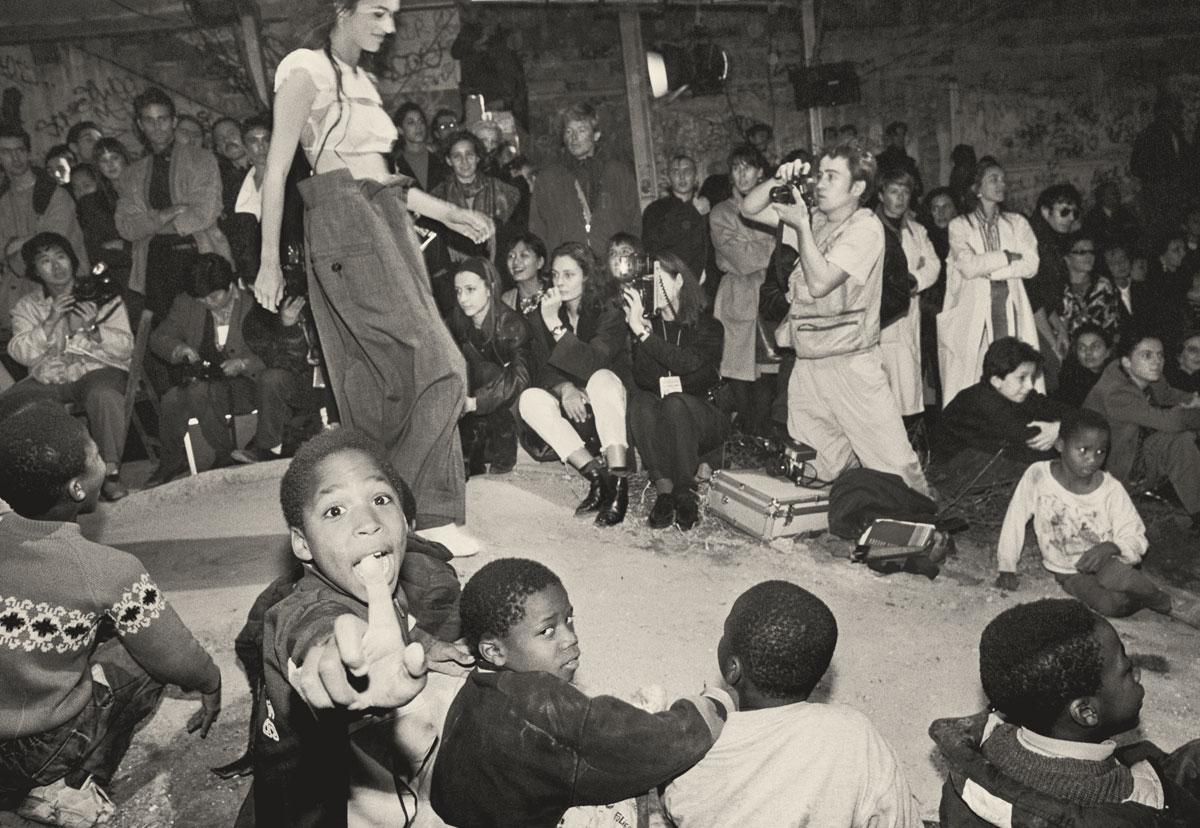
Martin Margiela‘s SS90 show is considered one of the most legendary fashion shows in the history of fashion. This is not only because she has launched the designer into the Olympus of ‘the greats’ on a global level, but also because Margiela for the first time manages to reverse the direction of the fashion system criteria (restricted, exclusivist, self-referential) towards a new research aesthetics of beauty and expression.
The show did not make him a star, much less a successful celebrity: many people literally hated that show! This was probably due to the strength of the change that Margiela was implementing: from ‘beautiful’ to ‘cool’. No longer perfect, flawless and attractive but provocative, biting and fascinating.

The first sign of revolution: The choice of location
Before him, Parisian shows were held in tents, built specifically for Paris Fashion Week, in front of the beloved symbol of Parisian exclusivity: the Musée du Louvre. Martin Margiela, on the other hand, preferred to set the catwalks in completely atypical places: the suburbs, the countrysides and more underground places where you could be in contact with a more raw and genuine reality.
The catwalk
The shows of the 1980s were beautiful: Lagerfeld, Jean Paul Gaultier, Lacroix showed beautiful women on the catwalk, dressed in elegant dresses and a determined and feline walk. With the choice of locations, Margiela clearly asked her models not to imitate the classic catwalk anymore! It simply wasn’t possible: the ground was unstable, the pavement was not smooth, and the ground was full of dirt and cobblestones from the road. With the catwalk abolished, the models were left with nothing more than a ‘realistic‘ and everyday style. Simply more true.
A show for everyone
Organizing the show near 20th R&D, Margiela and her team enlisted the help of a group of local kids to find the best venue for the show. The invitations to the fashion show were made by the same boys, who also involved the school in a creative and artistic project, creating more than 500 invitations: each invitation was finally unique and made entirely by hand.
Stop to perfection and order
The models were warned not to cut their hair in the days leading up to the show, just to achieve that state of life. Martin Margiela’s hairstylist was tasked with telling the models what he had told them.
“Martin has not told me what he wants, he has told me what he does not want: the hair will have to look anything but in order. He likes the effect of a woman who has done her hair herself”
The make up
Inge Grognard, make up artist of the runaway, said:
“It was an effect that was reminiscent of those little accidents you have when you’ve just finished your make-up, like you’re wearing your sweater and smudging your mascara.”
All in contrast with a white base that echoed the color of the clothes. There was nothing perfect about the make-up: just a new idea of authenticity, personality, particularity and individuality.
A new Front Row
The turnout was much, much more than they would have ever expected. The most shocking factor, however, was that the great profiles of the fashion world, such as fashion editors or great creative directors, had come to the suburbs to attend the Margiela show. There were reporters from New York Times, Vogue, Elle. The situation, however, was different from the classic one from which they came: from the center, where they had reserved seats in the famous front row, they moved to this underground place, where “first come first serve” and they no longer found the seats reserved nor bodyguard to make the door selection. The first row was instead occupied by those street kids who used to occupy the area: Margiela reserved it for him as a sign of respect and gratitude for having “lent” him the place to make his parade. Margiela’s show was therefore inclusive and this offered to photographers an unprecedented show: the boys and children in the front row gave life to the show and towards the end some of them got up to run with the models on the catwalk and parade with them.

You could be interested also in:
MM6 Maison Margiela and The North Face launch the Roly-Poly collection
More from fashion
Loro Piana accused of not paying its indigenous workers in Peru
"Our excellence": this is the value proposition found on Loro Piana's official website under the "viçuna" section. And indeed, how could …
A COLD WALL X Converse
A COLD WALL is a recently born British brand founded in 2005 by the very young designer Samuel Ross. Samuel …
The power of the colour pink: Jacquemus, Valentino, Balenciaga
Thinking about the last season of fashion and to the various marketing campaigns and runway we can find a constant: …







